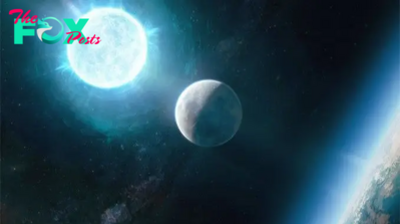Science
You May Be Able to See Northern Lights in These U.S. States Friday
People living in 12 U.S. states might have a chance to spot the Northern Lights on Friday night.
The Aurora Borealis will likely be the most visible in Canada and Alaska, according to the Space Weather Prediction Center (SWPC). But Washington, Idaho, Montana, Wyoming, North Dakota, South Dakota, Minnesota, Wisconsin, Michigan, Maine, and northern parts of New York could also fall within the lights’ viewline.
The SWPC forecasted that the aurora on Friday night will have a Kp index of 4, meaning that the aurora will move further from the poles and become brighter. “If you are in the right place, these aurora can be quite pleasing to look at,” the center said on its website. The Kp index is a measure of geomagnetic activity—the stronger the activity, the brighter the aurora will be.
A coronal mass ejection, which is an eruption of solar material, occurred on Tuesday, which resulted in higher geomagnetic activity. That led to a greater chance of spotting the Aurora Borealis in northern and upper Midwest states this week, according to the SWPC.
The best time to view the Northern Lights is usually between 10 p.m.- 2 a.m. (within an hour or two of midnight), according to the center. It has to be dark, and the center recommends Traveling away from city lights. The center also suggests going as close to the poles as possible for the best view.
The lights are often visible from the northernmost part of the globe, including in some parts of Iceland, Canada, and Alaska.
-

 Science6h ago
Science6h ago'People should not be there': 'Unsurvivable' 20-foot storm surge predicted as ferocious Hurricane Helene heads to Florida
-

 Science6h ago
Science6h agoJames Webb telescope spots rare 'missing link' galaxy at the dawn of time
-

 Science6h ago
Science6h agoAstronomers spot a possible 'future Earth' — 8 billion years into its future
-

 Science12h ago
Science12h agoRussian cosmonaut returns to Earth after completing record-breaking 1,111th day in space
-

 Science12h ago
Science12h ago'We have changed the view of our galaxy forever': Astronomers capture most detailed ever infrared map of the Milky Way
-

 Science1d ago
Science1d agoExperts predicted way more hurricanes this year — here's the weird reason we're 'missing' storms
-

 Science1d ago
Science1d agoNuking an asteroid could save Earth from destruction, researchers show in 1st-of-its-kind X-ray experiment
-

 Science1d ago
Science1d agoDeep below the Arctic Ocean, some plants have adapted to photosynthesize in almost near darkness

























